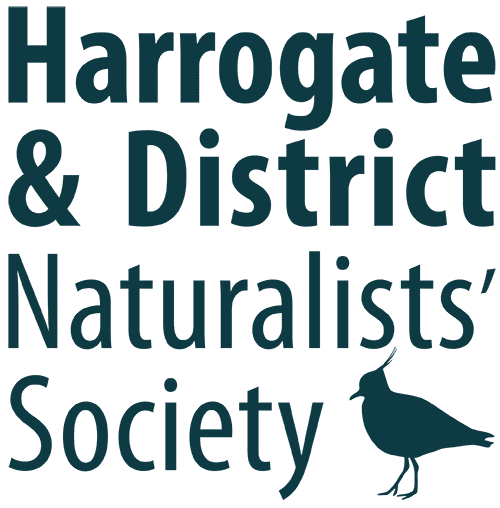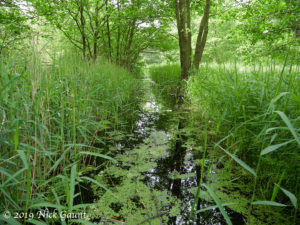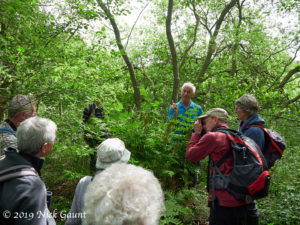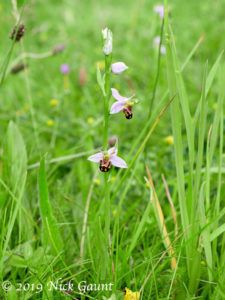17 members took part. We were fortunate that this meeting was led by renowned botanist, Alastair Fitter, Professor of Biology of the University of York and Chair of the Management Committee of this Yorkshire Wildlife Trust reserve since 1974. Several of the group had botanical field guides authored and co-authored by our guide. Such is the importance in terms of biological diversity that in 2016 the Trust was pleased to welcome Sir David Attenborough to Askham Bog. For its size it has more species than anywhere else in Yorkshire. The base-rich fringes vary 10,000-fold in pH from the acid centre and the bog is effectively a merging of wet westerly habitats with East Anglian fen, together providing a northern outpost for quite rare species.
Developers want to build 1000 houses just 200m from the Reserve. The reserve is already hemmed in on three sides with roads and railway and this would completely isolate it from potential biological corridors. The most pressing issue is that the water table on the reserve would drop dramatically and the reserve would dry out. The priority for management of the reserve is to keep the water in the reserve at all costs. The YWT are currently opposing the development.
Professor Fitter had set up a moth trap the previous evening near the entrance to the reserve and opened it while we were there. Of particular interest was the Blotched Emerald Comibaena bajularia.
Professor Fitter gave us a brief history of the site and explained how, as the ice melted, a lake was left by a retreating glacier. The peat dome is now gradually restoring itself following a long history of peat removal. The management of the reserve includes some peat cutting. The site has a network of medieval ditches which were used to remove the peat by punt. In the days of steam trains the vegetation was kept down to some extent by fires caused by the steam trains running close by. Now this is the task of the volunteers. Exmoor ponies graze parts of the reserve. The Alder, Alnus glutinosa, has to be cleared by hand as it is not eaten by grazing animals. One of the star plants of the reserve is Royal Fern Osmunda regalis. We saw small plants about 30 years old which were 30cm tall and also plants of 2.5 metres tall. We were told that the larger specimens were probably the oldest living things in York, being over 200 years old. The Royal Fern requires bare peat to regenerate. In times gone by the Royal Ferns were sold in York market. One of the other plants of note we saw was Bog Myrtle, Myrica gale. A road near the reserve is named Gale Lane, almost certainly after the plant. As we worked our way round the Reserve we saw Marsh Fern, Thelypteris palustris, the leaves of Marsh Violet, Viola palustris, and Water Violet, Hottonia palustris. Small Pearl Bordered Fritillary, Boloria selene, which feeds on marsh violet, were on the wing. We moved on to the raised bog where the old lake is higher than the surrounding area.We made our way to Far Wood to see the Tufted Sedge, Carex elata, and the rare Gingerbread Sedge, Carex elongata. To our peril we were advised that the nettles, Urtica dioica, that we had to navigate through, favour a wet spring. They were rampant and nearly as tall as me.
Alastair left us at lunchtime to meet a visitor. We had lunch sitting on the boardwalk by the pond. We had a change of priority at this time and added Azure Damselfly, Coenagrion puella, Four-spotted Chaser, Libellula quadrimaculata, Large Red Damselfly, Pyrrhosoma nymphula, and Blue-tailed Damselfly, Ischnura elegans, to our records.
After lunch we spent time at Near Wood and added some more plants to our record of the day: Common marsh bedstraw, Galium palustre; Marsh Pennywort, Hydrocotyle vulgaris; Marsh Cinquefoil, Comarum palustre; Carnation Sedge, Carex panicea; Gingerbread sedge, Carex elongata; Star Sedge, Carex echinata; and Great Fen-sedge, Cladium mariscus, also known as Saw Sedge. This latter was an interesting plant, standing up to 2.5m with long saw-toothed edged leaves. The small fungus Common Eyelash, Scutellinia scutellata was found on damp soil. Mosses seen included Fringed Bog Moss Sphagnum fimbriatum, Spikey Bog Moss, Sphagnum squarrosum, Heart-leaved Spear-moss, Calliergon cordifolium and Bog Bead-moss, Aulacomnium palustre. Our last 3 species to enjoy were Meadow Thistle, Cirsium dissectum, and then Bee Orchid, Ophrys apifera and Pyramidal Orchid, Anacamptis pyramidalis alongside the car park.
We had a terrific day out. Our thanks go to our leader Professor Fitter and the Harrogate Naturalist members, Kerry and Muff, who planned the visit for us.
More information about the Reserve is available if you search on the internet and also the YWT handbook has some interesting text and a map of the reserve.
Valerie Holmes





